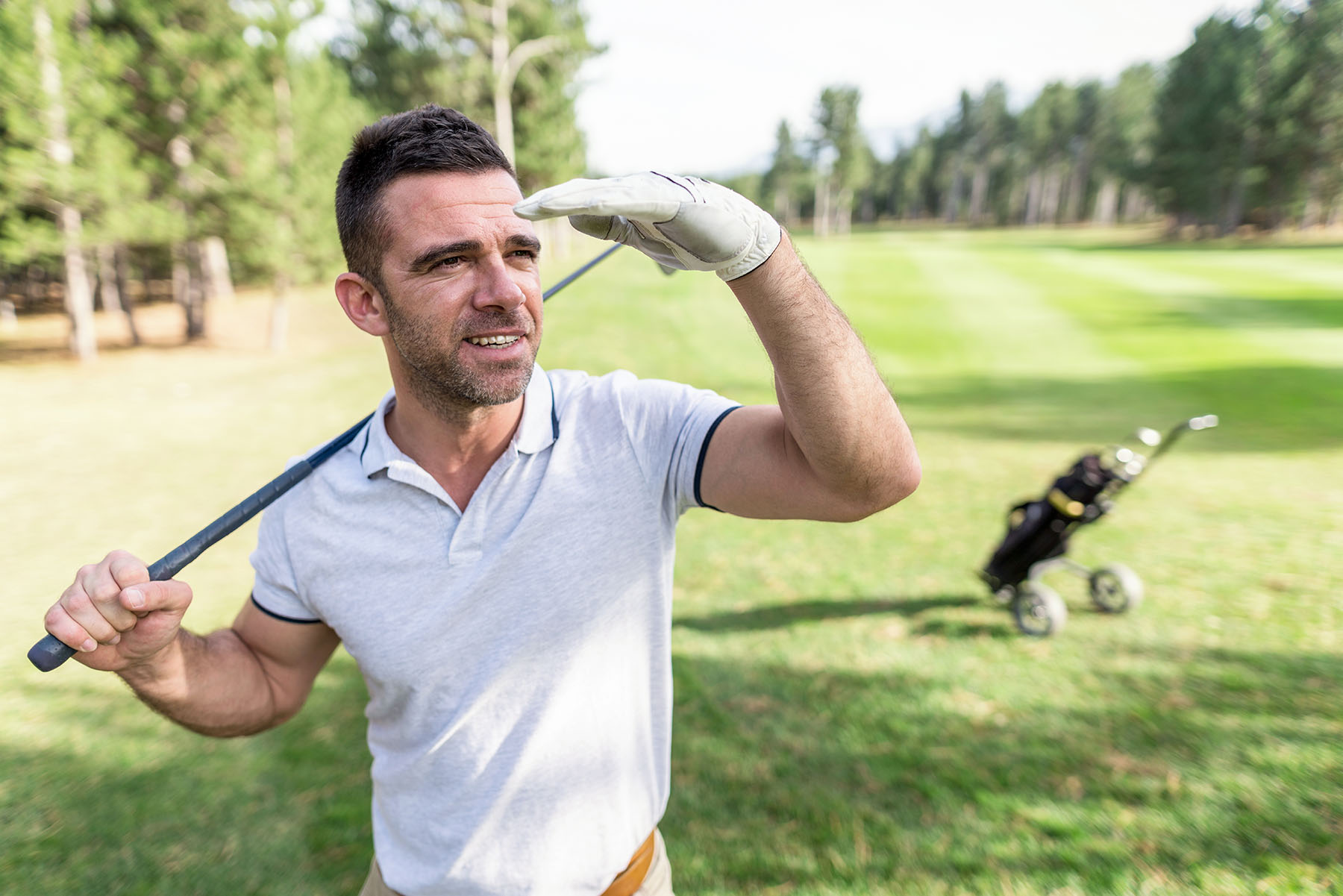Expert: How to Play the Long Game in Golf

Proper form and overall fitness keep you on the course longer.
Who doesn’t love a game of golf in the Florida sunshine? If you want to improve your game, now and in the future, take these steps.
Prevent golf-specific injuries.
Golfers can develop a variety of injuries – from shoulder, wrist/hand, and elbow, to hip/back, and knee injuries. As a doctor of osteopathic medicine who specializes in sports medicine, I see it all.*
*What is a doctor of osteopathic medicine (D.O.)?
A D.O. is a physician with additional training in osteopathic medicine. Osteopathic training focuses on the musculoskeletal system as a baseline for health. We treat the body as a whole and see all body systems as interconnected.
Upper extremity injuries typically occur more often from chronic overuse. Lower extremity injuries tend to happen from a single event or a sudden, acute injury.
For golfers, both categories of injury come down to technique and frequency. Poor technique compromises your joints and muscle tissue. Repetitive stress will cause injury even in those who have great technique.
Your flexibility, strength, and cardiovascular endurance also play a role. Someone who isn’t fit is more likely to fatigue faster, play through poor form, and, with enough repetition, sustain an injury.
Elite athletes more often sustain injuries from overuse because they play for much longer periods of time than recreational golfers. So, the types of golf injuries people sustain depend on their level of golfing.
- Among professionals, the wrist and spine are more commonly injured.
- Among amateurs, elbow and spine injuries are more prevalent.
In general, amateurs experience a greater number of injuries than professionals.
Whether playing professionally or recreationally, it is vital that you pay attention to your technique and physical conditioning – that includes your pregame warmup, flexibility, and strength training.
If you are new to golf:
Get lessons and instructions on the proper golf swing — it will pay dividends by preventing injuries. Those playing through an injury should be evaluated by a medical professional. This helps us figure out where the problem lies.
For example:
- Are weak forearm muscles destabilizing your wrist and leading to elbow pain?
- Is a lack of flexibility in your hip joint causing your hip pain?
Seeing a sports medicine physician is key. We specialize in evaluating injuries in athletes, and we understand the biomechanics involved in different sports.
You can improve your game even off the course.
There are many things you can do to improve your stamina, flexibility, and longevity in the game, even on days you don’t golf.
Cardiovascular endurance is important to prevent metabolic fatigue —walking, jogging, cycling, and working out on an elliptical are excellent ways to accomplish that. Pilates, sit-ups, burpees, and planks help develop core strength, while yoga promotes flexibility and joint mobility.
To play the long game in golf, focus on maintaining fitness and strength in these areas:
- Shoulder – rotator cuff muscles
- Elbow/wrist – wrist flexors and forearm muscles
- Spine and core (especially transverse abdominals) and glutes
To ensure that you play efficiently and prevent injury, or to heal an existing injury, see a sports medicine physician (whether a DO or M.D.), a physiatrist, and/or a physical therapist. A primary care physician is an excellent place to start to get an accurate diagnosis and personalized treatment plan.
Also, I cannot stress enough the importance of sports medicine training; it is essential in order for you to get treatment specific to your sport.
Sports medicine training allows a physician to accurately diagnose injuries, but equally important, to understand how that injury impacts your recovery and ability to return to your sport.
Sports medicine physicians also perform ultrasound-guided injections and other minimally invasive procedures to help you get back in the game.
Based on your physician’s diagnosis and referral, physical therapists evaluate an injury by testing things like muscle strength and range of motion. They can then provide specific exercises, as well as conservative treatments to help improve joint-specific strength, flexibility, and function. Physical therapy is an essential tool in the treatment of musculoskeletal injuries.
A physiatrist, or physical medicine and rehabilitative physician, has specialized training in musculoskeletal and neurological conditions. Many physiatrists also undergo additional training in sports medicine. Some perform nerve testing and offer spinal injections to relieve pain. In fact, an injection may be needed to relieve pain before the patient can begin physical therapy.
If you have a neck or back problem, physiatry is a good starting point, but a sports medicine physician of any background can guide you to the right place. If you qualify for physical therapy, the physician and physical therapist partner to ensure that you progress according to the treatment plan. If a patient does not improve with therapy, we then consider other diagnostics or treatments.
The bottom line for golfers of any skill level.
Develop the proper technique and maintain your overall physical fitness. Do that, and you will protect yourself from injury and enjoy the game for years to come.
Jenny Berezanskaya, D.O., CAQSM, is a doctor of osteopathic medicine specializing in sports medicine at the University of Miami Sports Medicine Institute.
Tags: Dr. Jenny Berezanskaya, golf swing, Miami golf, physical activity, reduce the risk, sports medicine specialist, types of exercise
